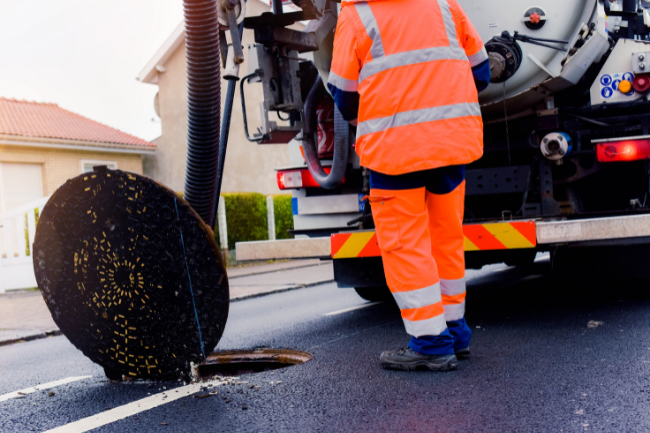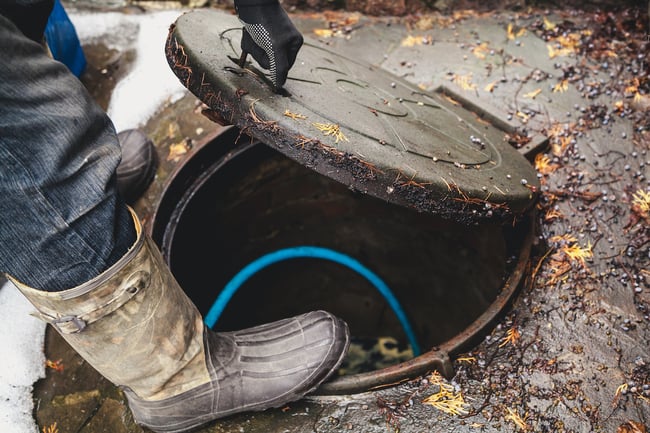Understanding Sacramento’s Sewer and Water System
Posted by William Heinselman on

As Sacramento's population continues to grow and its environmental challenges evolve, it becomes more important to understand the inner workings of its infrastructure.
In this article, we dive into the world of Sacramento's sewer and water system, shedding light on the crucial role it plays in the city's daily life, public health, and environmental sustainability.
Sewer System Basics
The Sacramento sewer and water system is a vital infrastructure network responsible for collecting and treating wastewater from homes, businesses, and streets. It comprises two main components: sanitary sewers for domestic sewage and storm sewers for rainwater and runoff. Gravity flow is employed wherever possible, but pumping stations assist in moving wastewater to higher elevations when necessary.
Treatment facilities play a crucial role in purifying the collected sewage, ensuring it meets stringent environmental and health standards. Regular maintenance and public awareness campaigns are vital for sustaining the system's efficiency and environmental responsibility.
In essence, the Sacramento sewer and water system safeguards public health, protects the environment, and supports the city's growth and well-being by efficiently managing wastewater and storm runoff, promoting water quality, and ensuring the responsible disposal of treated wastewater.
Wastewater Treatment
Wastewater treatment in Sacramento is a crucial process aimed at purifying and safely disposing of the city's sewage and wastewater to protect public health and the environment. Here's a basic overview of wastewater treatment in Sacramento:
- Collection: The process begins with the collection of wastewater from homes, businesses, and industries through an extensive network of sanitary and storm sewers. Sanitary sewers carry domestic sewage, while storm sewers collect rainwater and runoff from streets and other surfaces.
- Primary Treatment: The collected wastewater is first screened to remove large debris and solids. Then, it undergoes primary treatment, where settling tanks allow heavier solids to settle at the bottom as sludge, while lighter materials float to the surface and are skimmed off. This process helps separate solids from liquid wastewater.
- Secondary Treatment: Following primary treatment, the liquid wastewater undergoes secondary treatment, which involves the use of biological processes to further purify it. Microorganisms are introduced to break down organic matter and remove contaminants. This stage significantly reduces the pollutant load in the wastewater.
- Tertiary Treatment (Optional): In some cases, Sacramento's wastewater treatment facilities may employ tertiary treatment processes to further enhance water quality. This can include advanced filtration, chemical treatment, and additional disinfection to ensure the effluent meets stringent environmental standards.
- Disinfection: Before discharge into natural water bodies, such as the Sacramento River or American River, the treated wastewater is disinfected to eliminate harmful microorganisms, making it safe for the environment.
- Effluent Discharge: The final treated water, known as effluent, is carefully monitored to ensure it meets regulatory standards for water quality. It is then released into local rivers, where it rejoins the natural water cycle.
- Sludge Management: The solids separated during primary and secondary treatment, known as sludge, undergo further processing and treatment. Depending on its composition, sludge may be converted into biosolids for safe disposal or beneficial use, such as fertilizers or soil conditioners.
- Environmental Stewardship: Sacramento places a strong emphasis on environmental responsibility throughout the wastewater treatment process. Continuous monitoring and compliance with regulatory requirements help protect the region's water quality and aquatic ecosystems.
In summary, wastewater treatment in Sacramento involves a multi-stage process that includes collection, primary and secondary treatment, optional tertiary treatment, disinfection, and the responsible discharge of treated water. This critical system ensures that the city's wastewater is purified to meet strict environmental standards, safeguarding public health and the natural environment.
The Combined Sewer System in Sacramento
Sacramento’s Combined Sewer System is an older type of sewer infrastructure that combines stormwater runoff and sanitary sewage into a single system. These systems were commonly used in many older cities, including Sacramento before modern sewer systems were developed.
How it Works
In a Combined Sewer System (CSS), both rainwater and wastewater from homes and businesses are collected in the same network of pipes and are transported together to a wastewater treatment facility.
Key features of the Combined Sewer System in Sacramento include:
- Single Sewer System: In CSS, there is only one set of pipes to carry both sewage and stormwater. During dry weather, these systems efficiently transport sewage to treatment plants. However, during wet weather events, they are designed to handle the increased flow of stormwater runoff as well.
- Overflow Events: One of the challenges of Combined Sewer Systems is that during heavy rainfall or snowmelt, the system can become overwhelmed by the excess water. When this happens, the combined wastewater and stormwater may overflow into nearby rivers, streams, or other bodies of water. These events are known as Combined Sewer Overflows (CSOs). They can result in the release of untreated or partially treated sewage into the environment, posing a risk to water quality and public health.
- Modernization Efforts: Many cities, including Sacramento, have been working on modernizing their Combined Sewer Systems to reduce the frequency and volume of CSOs. This typically involves separating stormwater from sewage to create separate systems for each, which can help manage excess water more effectively.
- Environmental Impact: CSS can have a significant impact on water quality and the environment when CSOs occur. Untreated sewage can introduce pollutants into local water bodies, harming aquatic ecosystems and posing health risks to humans. Modernization efforts aim to mitigate these environmental impacts.
- Regulatory Compliance: Cities with Combined Sewer Systems are often subject to regulatory requirements and inspections that mandate improvements to reduce CSOs and improve water quality. These regulations aim to protect public health and the environment.
In recent years, Sacramento, like many other cities, has been investing in infrastructure improvements to reduce the impact of CSOs and enhance the treatment of wastewater and stormwater. This involves the construction of separate stormwater and sewage systems, along with the expansion and upgrading of wastewater treatment facilities to meet modern environmental standards. These efforts are vital for ensuring the city's sewer and water quality and environmental sustainability.

Sewer Repair and Maintenance in Sacramento
Here at Express Sewer & Drain, we know the stress that property owners deal with when unexpected issues arise. That's why our commitment is to provide our clients with outstanding trenchless sewer repair solutions and other plumbing services at budget-friendly rates.
Feel free to reach out to us today to discover more about the services we offer!
Topics: Plumbing in Sacramento, Sewers



![How to Prevent Flooding [6 Tips to Protect Your Property]](https://www.expresssewer.com/hubfs/prevent_flood.png?width=550)



